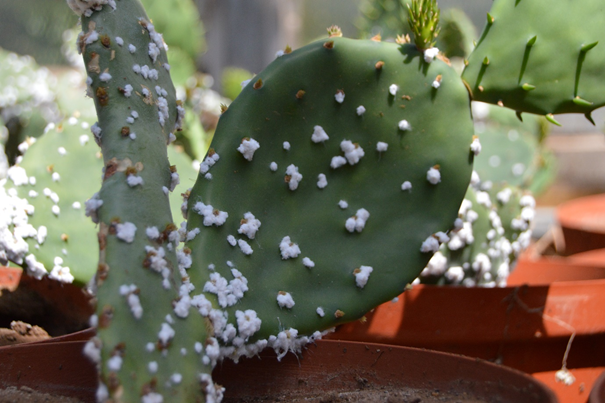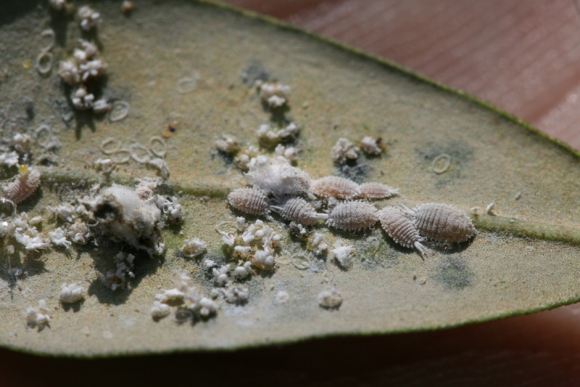Host plant compatibility and underground storage capacity do not explain the resistance of creeping prickly pear (Opuntia humifusa) to damage caused by the biocontrol cochineal scale insect Dactylopius opuntiae. This finding was the result of an honours project undertaken at the University of Cape Town by Nicola Rule and funded through the C·I·B.
Cochineal scale insects are bugs that cause major damage by sucking the sap from the flattened leaf-like stems of prickly pears. Due to their damaging effects, these insects are often used as biological control agents (natural enemies of a plant including predators, parasites, pathogens, and competitors) to eradicate prickly pear stands.

The study by Rule was conducted after it was noted that creeping prickly pear (O. humifusa) is able to withstand damage caused by cochineal scale insects more readily than the common prickly pear (Opuntia stricta), the insect’s normal host plant. Rule investigated whether the difference in the survival of the two host plants could be due to O. humifusa having enlarged roots, which are inaccessible to the insect and allow the plants to regenerate from stored reserves.
The study found that this is not the case and that the insect grows and reproduces just as well on creeping and common prickly pear under controlled conditions in a glasshouse. Other unidentified factors must therefore account for any differences in resistance of the two host plants. Investigation of further possibilities for the poor performance of this cochineal scale insect on creeping prickly pear in field trials are needed. Indeed, other types of agents may be needed if creeping prickly pear continues its spread.
“Although not yet a major weed in South Africa, creeping prickly pear has expanded its range and become more abundant in recent years. Biological control of this invasive species is going to become a priority, if agricultural and conservation areas are to be protected,” according to Nicola Rule.
N.F Rule and J. Hoffmann (2018). The performance of Dactylopius opuntiae as a biological control agent on two invasive Opuntia cactus species in South Africa. Biological Control 119, 7-11. https://doi.org/10.1016/j.biocontrol.2018.01.001



